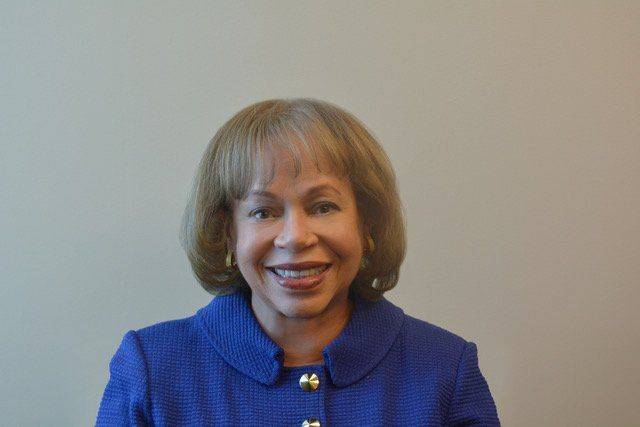Three Ways to Better Address Social Determinants of Health
Sylvia Kelly

How can we improve health equity and achieve more positive health outcomes in the U.S.? It’s becoming more and more clear that an individual’s zip code is a better indicator of their health status and life expectancy than their genetic code. In fact, there is as much as a 20-year difference in life expectancy depending on the zip code where a person lives. This is because a zip code often defines the social determinants of health in that specific geographic area.
Social determinants of health include factors such as socioeconomic status, race, ethnicity, gender, education, physical environment, employment, incarceration, social support, access to healthcare, and health literacy. These factors are unevenly and unequally distributed throughout society, causing barriers to care in communities throughout the country. Social determinants of health play such a critical role in health equity that they should be at the forefront of any discussion about improving health outcomes.
To that end, in April, Community Health Network of Connecticut, Inc. (CHNCT) in conjunction with the Connecticut Department of Social Services’ HUSKY Health (Medicaid) program, hosted its first Social Determinants of Health Summit. The one-day event brought together leaders and changemakers from nonprofit organizations, corporations, health and medical organizations, and government agencies, all of whom were eager to engage in thought-provoking conversation about social determinants of health. The diversity of the presenters, panels, and attendees-and their unique perspectives-underscored the importance of this Summit and the need to use it as a catalyst to take action.
This discussion is critical, said Lisa Tepper Bates, executive director for the Connecticut Coalition to End Homelessness and a panelist at the Summit.
“I can’t solve for somebody’s homelessness if their health condition means they can’t get up on their feet and the hospital can’t solve for their health if they can’t solve the housing. It makes a lot of sense for us to come together and think in a more holistic way … Not only can we then apply our resources more effectively, but we’re able to help the people who we’re working with in a much more pragmatic way,” Tepper Bates said.
Therein lies the crux of the matter. A person is not just a single condition or illness or disease. A person may need a variety of differing resources from a myriad of sources in order to be cared for holistically. One individual might have housing but no transportation. Another individual might have the opposite: transportation but no housing. These two individuals both want the same thing: a high-quality life. The resources they need to work toward that life are not the same.
“We really need to think about how we are breaking down the silos of our individual systems and reconnecting them in a more holistic way,” Alex Johnson, president and CEO of Capital Workforce Partners, said at the Summit.
Breaking down the silos will not be easy, but it can be done. “Collaboration is the key,” Johnson said.
Multi-step process
Addressing social determinants of health will be a challenge, but challenges can be overcome with perseverance and teamwork.
- Step 1: The first step is to stop looking at people as their disease or diagnosis. People are complex; they cannot be so easily summarized. Instead, we must take into account the whole person. This includes not only their condition but also their environment. Social determinants of health are not illnesses with tested treatments like cancer, diabetes, and asthma. Social determinants of health are an untold number of circumstances surrounding people. The circumstances and how they are faced will vary from person to person.
- Step 2: The second step is to start having community and statewide conversations about social determinants of health, much like CHNCT and HUSKY Health did with the Social Determinants of Health Summit.
- Step 3: The third step is one we should all be working on. It’s concentrating on the individuals, how to make their lives better, and doing that through collaboration and coordination; looking at individuals in a person-centered way, the whole person.
“It is about meeting members where they are, their values and preferences, and what they need to do to engage … these matters are foundational,” says Kate McEvoy, director of the Division of Health Services for the Connecticut Department of Social Services.
People have been “trying to bend patients to their care and not the care to the patient’s needs,” said Robert Zavoski, MD, medical director for the Connecticut Department of Social Services.
By doing what is possible to address the patient’s needs-all of the patient’s needs-the social determinants of health will start to be addressed, health equity will become more widespread, and health outcomes will become more positive.
Sylvia Kelly is the president and CEO of Community Health Network of Connecticut, Inc. (CHNCT), the medical Administrative Services Organization for the State of Connecticut’s Medicaid/CHIP programs known as HUSKY Health. CHNCT serves over 800,000 covered lives.
Extending the Capabilities of the EHR Through Automation
August 2nd 2023Welcome back to another episode of "Tuning In to the C-Suite," where Briana Contreras, an editor of Managed Healthcare Executive, had the pleasure of chatting with Cindy Gaines, chief clinical transformation officer at Lumeon.
Listen
Extending the Capabilities of the EHR Through Automation
August 2nd 2023Welcome back to another episode of "Tuning In to the C-Suite," where Briana Contreras, an editor of Managed Healthcare Executive, had the pleasure of chatting with Cindy Gaines, chief clinical transformation officer at Lumeon.
Listen
2 Commerce Drive
Cranbury, NJ 08512
All rights reserved.